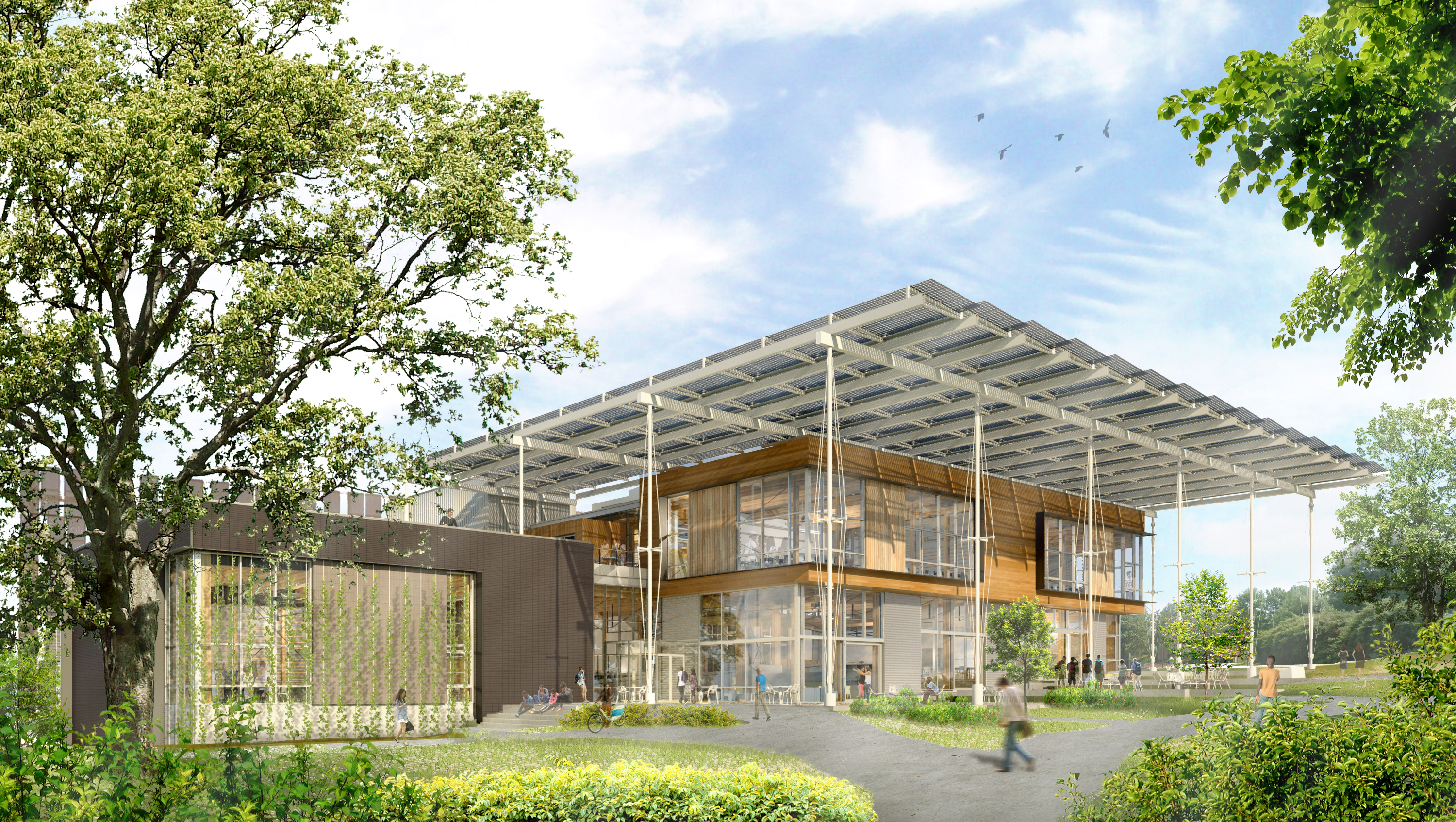
The Wall Street Journal highlights Georgia Tech and the Kendeda Fund’s efforts to create a self-sufficient building.
Ahead of this fall’s official opening of The Kendeda Building for Innovative Sustainable Design, the Wall Street Journal has highlighted Georgia Tech and the Kendeda Fund’s efforts to create a self-sufficient building.
The Kendeda Building aims to be the Southeast’s first certified Living Building, the most advanced measure of sustainability in the built environment. It will produce more energy than it uses, collect and recycle water, and, as Journal reporter Keiko Morris put it, serve as “a crucial test case of whether a large-scale environmentally advanced project can achieve its goals in the heat and humidity of the Southeast.”
Other certified living buildings have opened in more temperate and less humid climates, where they don’t contend with the same range of temperatures as Atlanta.
“The Southeast is one of the most difficult climates to design for in the world,” Dennis Creech, fund adviser for the Kendeda Fund, told the Journal. “You have a need for heating in the wintertime, cooling in the summertime, and you have humidity to deal with year-round.”
More from Morris’ story:
The Atlanta building “takes away some of the naysayer argument of ‘Oh, that works in Seattle or Germany but you can’t do that here,’” said Shan Arora, director of The Kendeda Building. The Atlanta building relies on robust insulation, triple-pane glass windows and automated external blinds to help maintain comfortable temperatures, keeping out hot humid air and preventing heat gain from the sun. A roof canopy of more than 900 solar panels will provide shade in addition to powering the building. Energy-efficient radiant cooling and heating in the flooring, ceiling fans and a separate dehumidifying system also reduce energy use.